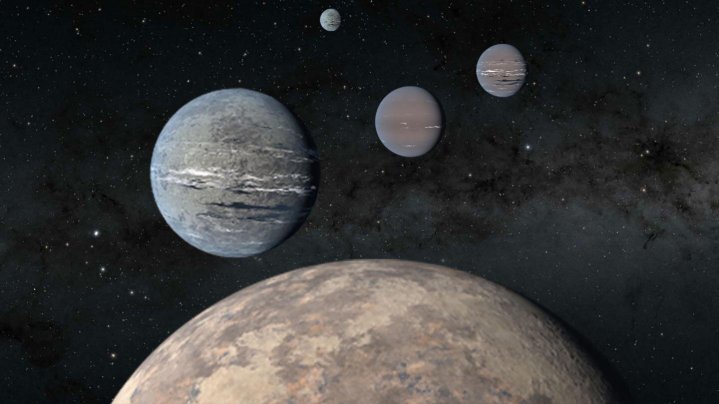
Just in case you were feeling complacent about your achievements lately: A pair of high schoolers involved in a mentorship program at Harvard have helped to discover four new exoplanets. As co-authors on a peer-reviewed paper in the Astronomical Journal, they are some of the youngest published astronomers ever.
16-year-old Kartik Pinglé and 18-year-old Jasmine Wright worked on data from NASA’s Transiting Exoplanet Survey Satellite (TESS), looking particularly at a nearby star called TOI 1233. By looking for dips in brightness from stars, researchers can identify exoplanets passing between us and the star. In this case, the team found no less than four planets in orbit.
“I was very excited and very shocked,” Wright said in a statement. “We knew this was the goal of [mentor Tansu] Daylan’s research, but to actually find a multi-planetary system, and be part of the discovering team, was really cool.”
The system consists of a star orbited by three sub-Neptunes, which are gaseous planets like Neptune but smaller, which have orbits of between six and 19.5 days each. The fourth planet is a super-Earth, meaning it is rocky like our planet but larger, which orbits the star every four days.
Mentor Tansu Daylan says he hopes to study this system in greater detail, and that it could help researchers understand more about how systems form.
“Our species has long been contemplating planets beyond our solar system and with multi-planetary systems, you’re kind of hitting the jackpot,” he said in the statement. “The planets originated from the same disk of matter around the same star, but they ended up being different planets with different atmospheres and different climates due to their different orbits. So, we would like to understand the fundamental processes of planet formation and evolution using this planetary system.”
Daylan also said he valued having young astronomers in his group as they bring a fresh perspective. “As a researcher, I really enjoy interacting with young brains that are open to experimentation and learning and have minimal bias,” he said. “I also think it is very beneficial to high school students since they get exposure to cutting-edge research and this prepares them quickly for a research career.”
This could be just the beginning of an astronomy career for the two promising young researchers. Pinglé is considering studying applied mathematics or astrophysics once he graduates, and Wright will soon be starting a Master’s program in astrophysics.
Editors' Recommendations
- Astronomers discover a super-Earth located in the habitable zone
- How astronomers used James Webb to detect methane in the atmosphere of an exoplanet
- Astronomers spot an exoplanet creating spiral arms around its star
- Astronomers discover three exoplanets in final data from Kepler Space Telescope
- Astronomers discover Earth-sized exoplanet covered in volcanoes




